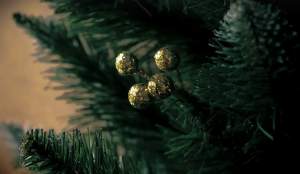
A Step-by-Step Guide for a Night Out Under the Stars
Let’s face it, sometimes even the most reliable car can run into some rough patches. A dead headlight or taillight is one of those annoying roadblocks that can put your driving experience on hold. But fear not! Changing a light bulb in your car might seem intimidating, but with a bit of know-how and this guide, you’ll be back on the road in no time.
Before diving into the actual procedure, let’s gather some tools and safety measures. First things first, ensure your car is parked in a level, well-lit area. You’ll want to avoid any accidents or hazards caused by an unstable vehicle. Next, locate the fuse box for your car, which usually holds the fuses related to your headlights. This might require you to consult your owner’s manual if you are unsure.
Now that your tools and location are set, let’s talk about the process itself. You will need a new light bulb, ideally of the same type and wattage as the one that has gone out. These bulbs often have varying sizes and voltage requirements, so it’s essential to match them for proper functioning.
The first step is to open your car’s hood. This usually involves releasing a latch or pulling on a handle located near the steering wheel or inside the cabin. Once the hood is lifted, locate the specific light bulb you need to replace. Remember, different car models have various locations for their bulbs. Some may be easily accessible with just a twist of a latch, while others require tools like screwdrivers, wrenches, or even special socket wrenches.
Once you’ve identified the affected bulb, it’s time to carefully disconnect it from its housing. The method will vary depending on your car’s make and model. Some bulbs have small clips that need a gentle pull to release them. Others may require a flathead screwdriver or even a tiny wrench. Be careful not to strain the wires or cause any damage to the bulb’s housing during this process.
Once you manage to unplug the old bulb, it’s time for the new one! Carefully insert the new light bulb into its socket, ensuring the contacts align properly. Many bulbs have their polarity marked with an arrow indicating the correct direction of insertion. If there is no marking, you can often tell by simply looking at how the pins fit together and making sure you don’t accidentally flip it.
The final step involves re-attaching the bulb’s housing securely. Once again, this process varies depending on your car model. For some cars, you need to gently press down and rotate the housing until it locks into place. For others, there might be a sliding mechanism or a tightening bolt that needs to be adjusted.
After finishing the installation of the new bulb, ensure everything is secure, and then double-check your work by turning on the affected lights. This will help you verify if the connection is correct and if the light flickers or doesn’t illuminate as expected.
Congratulations! You’ve successfully changed your car’s light bulb. Before heading out for a midnight drive, it’s always a good idea to check the wiring to ensure there are no loose wires or frayed connections. This can help prevent future problems before they escalate into bigger issues.
As you settle back into your driver’s seat, remember that replacing your car’s light bulb is a small but significant step towards ensuring your safety and enjoying the open road. Now, with your car shining brightly, you’re ready to hit the road for whatever adventure awaits!
And if there are any questions or concerns, it’s always best to consult your owner’s manual for detailed instructions on replacing your specific car’s light bulbs.



